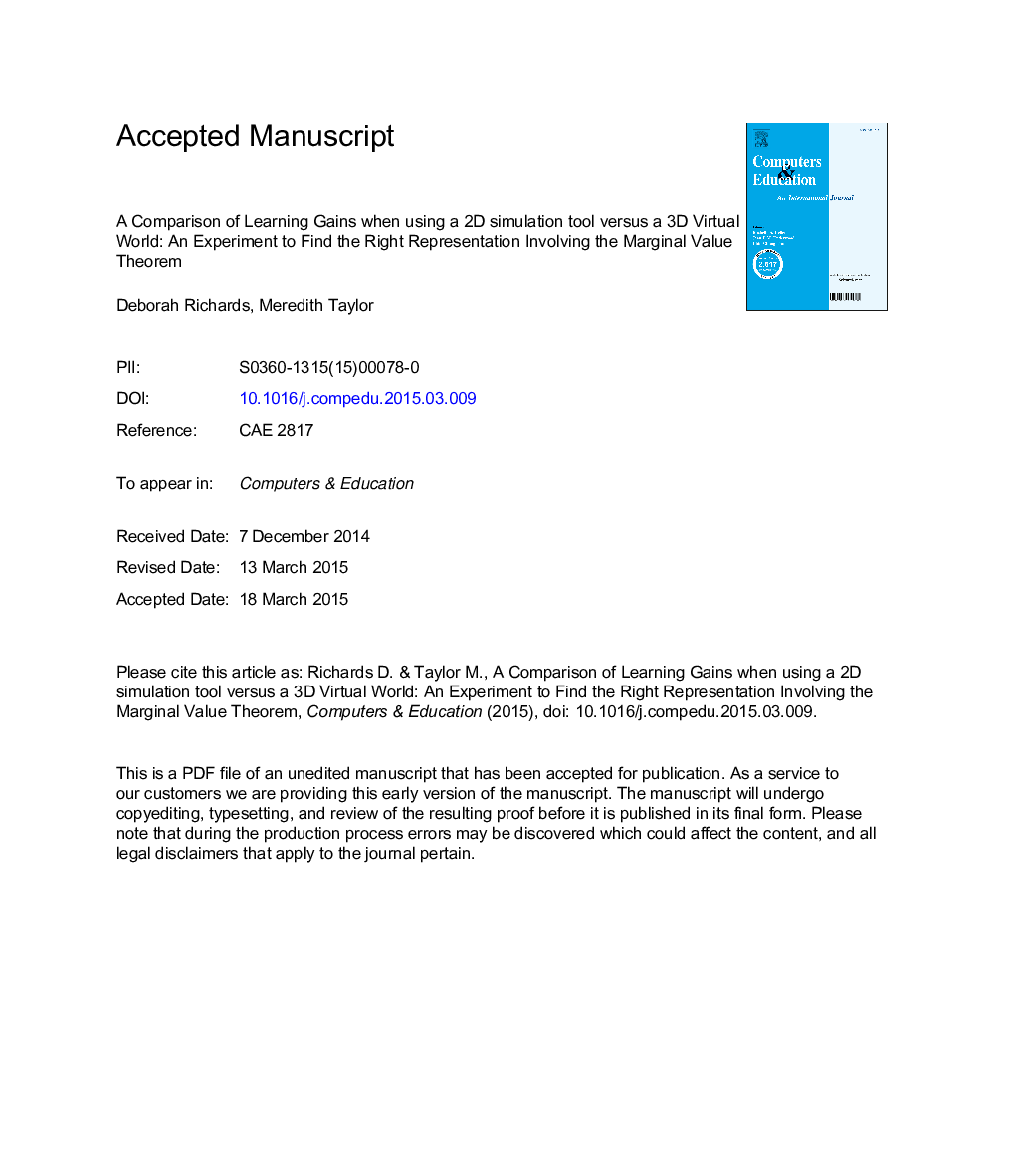| Article ID | Journal | Published Year | Pages | File Type |
|---|---|---|---|---|
| 6835078 | Computers & Education | 2015 | 38 Pages |
Abstract
The use of three-dimensional Virtual Worlds in the classroom offers the promise of engaging and authentic learning experiences. Given the effort and investment involved in the creation of these worlds, more studies are needed which measure the learning gains. In particular, greater understanding is needed concerning what aspects of the technology are beneficial for learning what sort of content and in what context. We conducted two experimental studies involving 129 biology students over a two-year period that sought to make a contribution towards this understanding. Our study compared the knowledge of students after a traditional classroom lecture about a biological theorem known as Marginal Value Theorem, with their knowledge after they were exposed to simulations of two-dimensional models developed in NetLogo and three-dimensional models developed in Unity3D. Perhaps due to cognitive overload and distractors in the virtual world, it appears that the two-dimensional NetLogo model delivered better learning outcomes.
Related Topics
Social Sciences and Humanities
Social Sciences
Education
Authors
Deborah Richards, Meredith Taylor,
